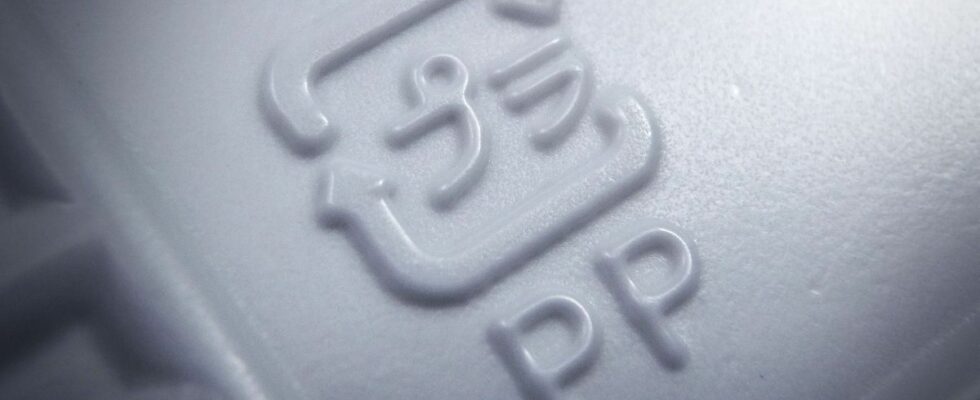Published on
updated on
Reading 3 min.
Plastics are divided into three main families, all petroleum-based: thermoplastics, the most widespread, are malleable once heated and can be remelted. Elastomers are deformable with elastic qualities, and thermosets are resins that are irreversibly hardened.
Within each family, an infinite number of polymers are frequently mixed with a wide range of additives, sometimes harmful to the environment or health, which allow them to change their color, prevent aging, make them flexible, increase impact resistance or reduce their flammability.
Here are the most commonly used plastics in the world and their abbreviations, as listed by the OECD:
PP
The most widely used plastic in the world (16%), developed since the mid-1950s, is polypropylene (PP) used for automotive parts and food packaging for storage and reuse, but also sometimes for disposable trays.
In the medical field, it is used for syringes, sutures, gowns and mainly (around 90%) for covid tests, according to the OECD.
HDPE, LDPE
High and low density polyethylene (HDPE or LDPE) each account for 12% of global plastic use according to the OECD.
HDPE, derived from ethylene, was invented in 1933 by English engineers EW Fawcett and RO Gibson of the British firm ICI. It is used for toys, shampoo bottles, pipes, engine oil cans and all sorts of household objects.
LDPE, developed later from the 1950s, is widely used to manufacture flexible products such as bags and food packaging films.
PVC
Polyvinyl chloride (PVC) is used mainly in construction for window frames, floor coverings, pipes or cable insulation. According to the OECD, in total, it represents 11% of uses.
It is notably the plastic polymer most used in medical devices (infusion bags, medicinal solutions, breathing or injection tubes).
PS
Polystyrene (PS), invented in 1931 by IG Farben, weighs 5% of the total, mainly used for food packaging. Unexpanded, it is used for yogurts or in construction. In its expanded version, it is used for packaging fish or for insulation in construction.
In the medical field it is used for diagnostic instruments, disposable laboratory equipment and pipettes.
PET
Also accounting for 5% of the global volume, polyethylene terephthalate (PET) is the most widely used plastic for beverage bottles, in transparent versions (water, sodas) or sometimes opaque, to extend the shelf life of products (milk). According to the OECD, PET and PE used in packaging are expected to “more than double” by 2060.
PURE
Polyurethane (PUR), developed in 1937 by Otto Bayer, is found in foam or rigid form, and represents 4% of the world’s plastic. Its main uses are in refrigerator insulation, as padding foam in buildings or mattresses, for adhesives, various coatings, shoe soles, and in composite wood panels or surfboards.
ABS, PBT, PTFE, PMMA
Other types of plastic, which represent 22% of the total volume, include ABS (acrylonitrile, butadiene, styrene) used for tires, PBT (polybutylene terephthalate), PC (polycarbonate), PTFE (polytetrafluoroethylene), and PMMA, another name for plexiglass (or polymethyl methacrylate).
Biosourced
Bio-based plastics, which are in full development, are made from biomass such as corn, sugar cane, wheat or other residues, and not from petroleum products. Their production generates less greenhouse gases than that of fossil-based plastics. Their volume is increasing, but not as fast as that of other types of plastic, says the OECD.
Polyester, polyamide textile
Polyester or polyamide fibres – or blends of different polymers – used in the textile industry, represent 13% of the world’s plastics.
